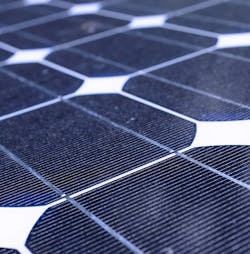Known for their low manufacturing cost, quick energy-payback time, and robustness in hot or humid conditions, CdTe PVCs rank as the second-most-used solar cells behind their silicon counterparts. But their low open-circuit voltage, which had never surpassed 900 mV, limited the devices’ applicability. However, in a Nature Energy journal article published this February, the authors claim that the final product surpasses the 1-V mark.
"It's a significant milestone. It's been below 900 mV for decades," said Kelvin Lynn, Regents professor in WSU's School of Mechanical and Materials Engineering and Department of Physics, who led WSU's effort.
According to the report, the method uses small amounts of highly reactive phosphorous at tellurium lattice sites, creating ideal interfaces between materials with different atomic spacing complete the solar cell. The method led to better conductivity and carrier lifetime by orders of magnitude, and opens new research paths for efficient solar cells.
While the NREL treated the crystals, in addition to building and characterizing the solar cells, WSU researchers developed the crystal material used in the cell. In a technique called melt-growth, the researchers mixed, prepared, and vacuum-sealed the materials in a clean room to achieve maximum purity. The crystals were then synthesized in a furnace above 1100°C and cooled from the bottom up at a rate of 1 mm per hour. Subsequently, the crystals were cut into polished wafers to make solar cells.
"Others have tried dopants, but they didn't have the control and purity that we have. And, the purity matters,'' said Lynn. "WSU is known for growing really high-quality and -purity crystals. You have to control every step."
Lynn also expects that by using WSU’s established techniques, CdTe-cell efficiency could improve up to an additional 30%.
About the Author
Leah Scully
Associate Content Producer
Leah Scully is a graduate of The College of New Jersey. She has a BS degree in Biomedical Engineering with a mechanical specialization. Leah is responsible for Machine Design’s news items that cover industry trends, research, and applied science and engineering, along with product galleries. Visit her on Facebook, or view her profile on LinkedIn.

